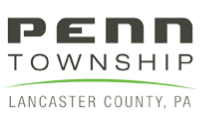Contact a Police Officer for a Non-Emergency Situation. Call 911 and say it is for a non-emergency, or call the Northern Lancaster County Regional Police Department office at 717-733-0965 during business hours, 8am to 4:30pm.
https://lancaster.crimewatchpa.com/nlcrpd/8795/contact/contact-us
Why does the township have a fee for false alarms? To inhibit excessive false alarms.
Excerpt from Township Fee Schedule Resolution 2024 False alarm response fees:
First false alarm per calendar year $0.00
Second false alarm per calendar year $0.00
Third false alarm per calendar year $35.00
Fourth false alarm per calendar year $50.00
For each subsequent false alarm in a calendar year, the fee will be an additional $75.00 (e.g., fifth will be $125.00, sixth will be $200.00, and so on).
False alarm fee waiver.
Payment of a response assessment fee may be waived by the Zoning and Codes Officer. Upon written notification by the owner of the alarm system and verification by the Zoning and Codes Officer that such false alarm was caused by an act of nature, as to an APD (automatic protection device) which has been installed or modified within 30 days prior to the false alarm or, the proprietor shows written verification that the alarm has been inspected, serviced and repaired post incident within 15 days of said incident, where the Zoning and Code Officer concludes that the false alarm resulted from good-faith user familiarization process or the process of adjustment of mechanical malfunction.
Find Buried Utilities before digging? Planning to dig? You will need to have the underground lines marked. Designing a project, no matter how big or small, you need to know the location of the underground lines. To place a dig or design notification in Pennsylvania, please call 811 or 1-800-242-1776 (outside PA). For further information for Pennsylvania, One Call System click on the link provided to review their website, www.call811.com .
Get a Building/Zoning Permit? Click on the following link to view and print the Building and Zoning Permit Applications: https://penntwplanco.org/government/forms-applications/
Get information about Property Taxes. The County of Lancaster serves as the real estate tax collector for Penn Township for both the municipal and the county real estate taxes.
Lancaster County Treasurer’s Office, 150 North Queen Street, Suite 122, P.O. Box 1447, Lancaster, PA 17608
Phone: 717-299-8222
Hours: Monday – Friday, 8:30 a.m. – 4:30 p.m.
The real estate tax discount period ends April 30. The real estate tax base period ends June 30. Taxes paid after June 30 are assessed a penalty. The Penn Township millage rate is 1.4326 ($1.4326 for each $1,000 of real estate value).
– For questions about Property Assessment data, please contact PAQuestions@co.Lancaster.pa.us
– For questions about delinquent tax data (claims or collections), please contact Tax Claims at (717) 299-8232
How are street lights paid for and assessed?
The township has adopted a street light fee (not tax) for specific neighborhoods, in Fee Schedule Resolution 2022-08 : Section 24, Fees for Streetlights within Developments. The cost of any street lighting which serves primarily a local area and which is installed at the request of the residents or developer of the area shall be financed through a uniform annual assessment of each area based on the average cost of the street lighting per [property]:
Mountain View Estates $47 per year
Hi View Estates $32 per year
Mallard Ponds $32 per year
Cedar Hollow $80 per year
Baron’s Ridge $80 per year
These fees were derived from the different lights and costs charged to the township in each neighborhood. The fees are intended to be revenue neutral – merely covering the township’s costs for those lights. The township also pays out of the general fund for the street lights on the through-roads in the rest of the township.
Drain My House Swimming Pool Water
An easy, compliant way to drain pool water is to empty it slowly onto your own lawn. Otherwise, chlorinated swimming pool water is not allowed to be put into a stormwater management facility or easement; see Prohibited Discharges. Do not direct pool water discharge to a private septic system.
What is a public sewer or public water tapping fee and why does it cost that much?
The tapping fee secures a share of the sewage or water capacity needed in the collection (sewer) or distribution (water), conveyance, and treatment facilities. This does not include the cost to construct the connection. The fees are determined through a prescribed method in Pennsylvania Acts 57 and 203. See Peen Township
The intent of tapping fees is to recover a portion of the fixed capital investment of the systems from a customer. The fee charged to the new customer, or to the current customer increasing its demand on the systems, reflects the cost required to provide service as well as recover a portion of the embedded capacity available to provide that service. For more details see NWLCA Resolution 2-2020 Water Tapping Fee or NWLCA Resolution 4-2019 Sewer Tapping Fees.
What is the Nonresidential Waste (sewer) Program for?
The NRW program intends to better capture the impact of commercial and other uses higher strength-of-waste on the sewer treatment system. The sewer system is designed for typical, residential strength-of waste. Some nonresidential uses, however generate stronger sewer into the system, costing the system more to treat that sewage. Specified compounds (i.e., Ammonia) and parameters (i.e., BOD – biological oxygen demand) are measured in the treatment system, as required. The NRW customer provides quarterly lab test results to identify the customer’s impact on the system.
The NRW program proposes to help those customers pay their share of the service, and to account for the organic capacity of the treatment system – like the system’s hydraulic capacity is accounted for through usage fees. Without the NRW program, residential and other customers are effectively subsidizing some nonresidential customers’ sewer service, and the treatment system may be consumed before the hydraulic capacity is reached. For more details, see NWLCA Resolution 3-2019 Nonresidential Waste Rates.
